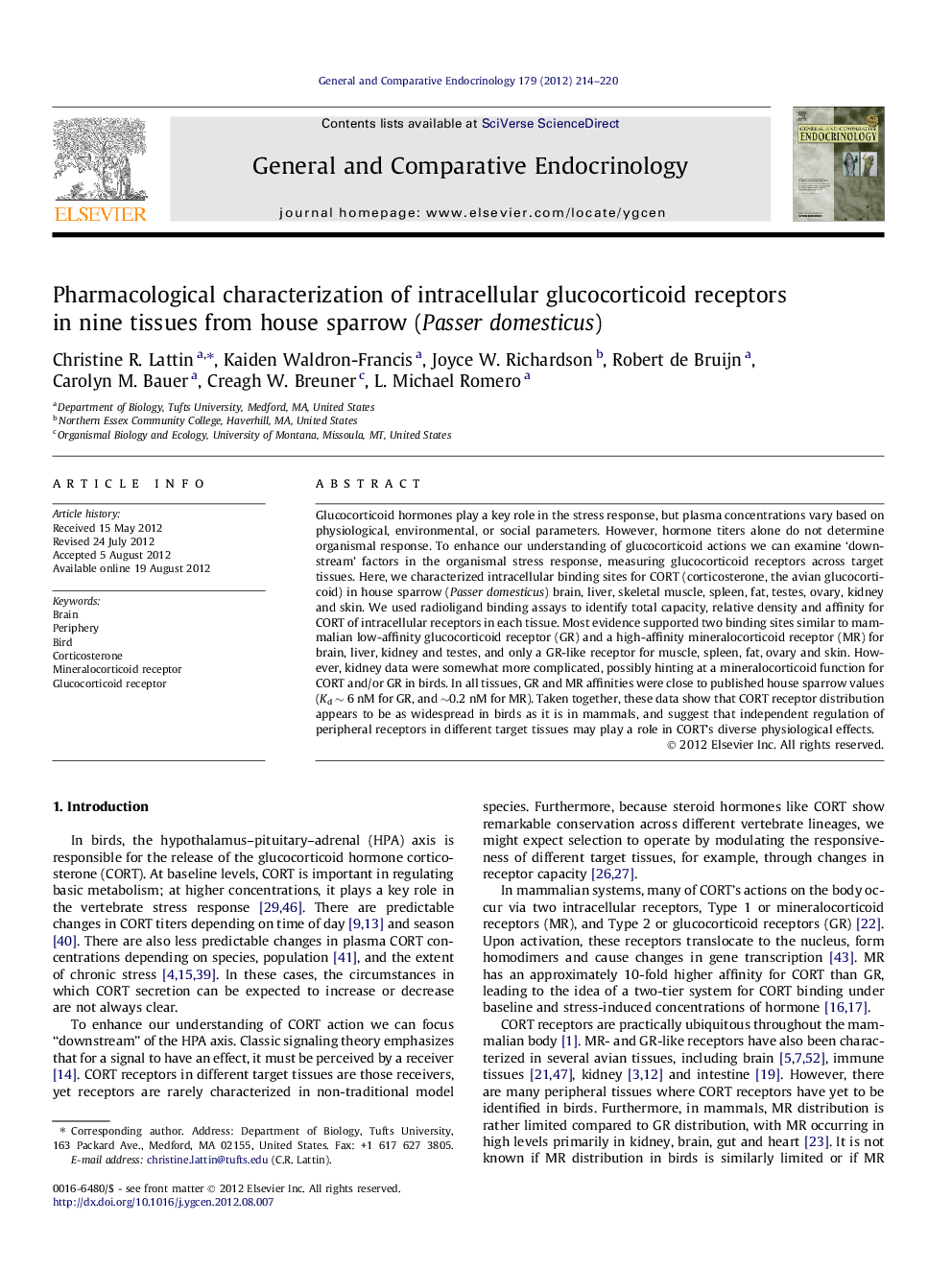| Article ID | Journal | Published Year | Pages | File Type |
|---|---|---|---|---|
| 5901579 | General and Comparative Endocrinology | 2012 | 7 Pages |
Glucocorticoid hormones play a key role in the stress response, but plasma concentrations vary based on physiological, environmental, or social parameters. However, hormone titers alone do not determine organismal response. To enhance our understanding of glucocorticoid actions we can examine 'downstream' factors in the organismal stress response, measuring glucocorticoid receptors across target tissues. Here, we characterized intracellular binding sites for CORT (corticosterone, the avian glucocorticoid) in house sparrow (Passer domesticus) brain, liver, skeletal muscle, spleen, fat, testes, ovary, kidney and skin. We used radioligand binding assays to identify total capacity, relative density and affinity for CORT of intracellular receptors in each tissue. Most evidence supported two binding sites similar to mammalian low-affinity glucocorticoid receptor (GR) and a high-affinity mineralocorticoid receptor (MR) for brain, liver, kidney and testes, and only a GR-like receptor for muscle, spleen, fat, ovary and skin. However, kidney data were somewhat more complicated, possibly hinting at a mineralocorticoid function for CORT and/or GR in birds. In all tissues, GR and MR affinities were close to published house sparrow values (Kd â¼Â 6 nM for GR, and â¼0.2 nM for MR). Taken together, these data show that CORT receptor distribution appears to be as widespread in birds as it is in mammals, and suggest that independent regulation of peripheral receptors in different target tissues may play a role in CORT's diverse physiological effects.
⺠We characterized intracellular binding sites for corticosterone in house sparrows. ⺠Evidence supported two distinct binding sites in brain, liver, kidney and testes. ⺠Muscle, spleen, fat, ovary and skin showed one distinct binding site. ⺠Sites appeared similar to mammalian mineralocorticoid and glucocorticoid receptors. ⺠Corticosterone receptor distribution appears practically ubiquitous in birds.
